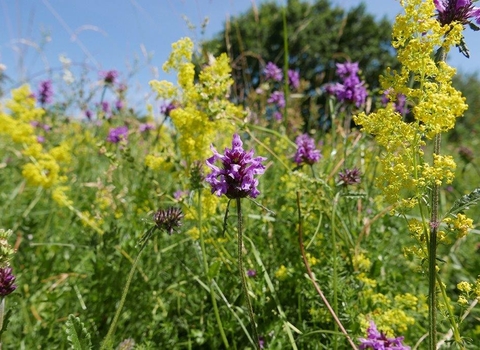There is no parking available at Gamlingay Wood, and please do not park on road verges.
Gamlingay wood - Bob Parker
Gamlingay Wood
Location
Know before you go
Dogs
When to visit
Opening times
Open at all timesBest time to visit
spring and autumnAbout the reserve
The ancient woodland (48Ha) is at least a thousand years old, and the character and diversity of wonderful wildlife here reflects it.
For centuries, the wood has been important to the local community as a valuable source of building materials and firewood. We continue to carry out traditional coppicing, supplying thatching materials, stakes for hedgelaying and even beanpoles in Gamlingay to this day. The ancient wood is primarily oak, ash and field maple, with an understorey of hazel and hawthorn.
In parts of the wood, conifers were planted after the Second World War; we are gradually removing these. Due to the different soil types throughout the wood, the flora is very diverse. On sandier soils there is bracken, primrose and foxglove, whereas on the clay soils, bluebells, oxlips and wood anemones thrive.
Myriad insects live in the wood, including speckled wood and purple hairstreak butterflies, longhorn beetles and several species of dragonfly. Along the grassy rides and paths, clouds of butterflies rise up from the flowers, then, as dusk gathers, bats hawk along the rides to take advantage of the abundance of moths. Birds are active year-round, whether trilling warblers, tapping woodpeckers or hooting owls.
Nearby Sugley Wood (22 hectares) is former arable land purchased by the Trust in 2002. Slowly reverting to woodland, it is already home to many mammals, while farmland birds such as yellowhammer and skylark fly overhead. In the evening, barn owls hunt silently.
We mow the rides and paths and coppice along the edges to allow more light for flowers and butterflies. Sections of the wood are fenced to prevent deer damage.
Access
Gamlingay Wood is owned and managed as a nature reserve by The Wildlife Trust BCN. The reserve is very popular with visitors so balancing wildlife conservation with public access is very important to the Trust. There are no public rights of way within the woodland, however the Trust does allow permissive access for the public to visit.
We want people to enjoy the woods but as the landowner we may withdraw permissive access if there are concerns about public safety and to protect sensitive wildlife habitats.
Parking: there is no parking available at Gamlingay Wood, and please do not park on road verges. Access to the southern wood entrance is via the permissive path from Long Lane (next to Gamlingay parish allotments). Nearest parking 200m to west of allotments on Church End road. Access to northern wood entrance is from the Waresley/Gamlingay road (B1040) then south across a surfaced farm track. Nearest parking Waresley Garden centre approx. 0.75 mile to the east.
Additional information
- Rippengal's Walk is named for Robert Rippengal, an archaeologist by training. Robert was the founder and director of a Cambridge-based company selling wood-fuelled renewable heating systems. He enjoyed walking in the woods and was inspired by the Trust’s Vision of expanding and joining its woodlands. After he died tragically while walking in the mountains, his friends and family felt that supporting the Trust’s woodland work was a fitting memorial.
- Gamlingay Wood is part of the West Cambridgeshire Hundreds Living Landscape.
- Scroll down to see the reserve boundary. Please note the boundary map is for indication purposes only and does not show the Wildlife Trusts definitive land boundary.
Get Involved
Want to help make things better for wildlife and people in your area? There are regular practical volunteer work parties that run from this nature reserve, and other volunteer opportunities here or nearby, where you can take action for wildlife.
FOR ANY MEDIA ENQUIRIES PLEASE CONTACT OUR COMMUNICATIONS TEAM: communicationsteam@wildlifebcn.org or 01954 713500 and ask for Comms team.
Species
- Muntjac deer
- Barn owl
- Blackcap
- Blue tit
- Buzzard
- Garden warbler
- Kestrel
- Song thrush
- Willow warbler
- Woodcock
- Purple hairstreak
- Silver-washed fritillary
- Small heath
- Speckled wood
- Six-spot burnet moth
- Bluebell
- Bugle
- Common spotted-orchid
- Early purple orchid
- Herb-paris
- Purple-loosestrife
- Tormentil
- Wild service tree
- Yellow archangel

